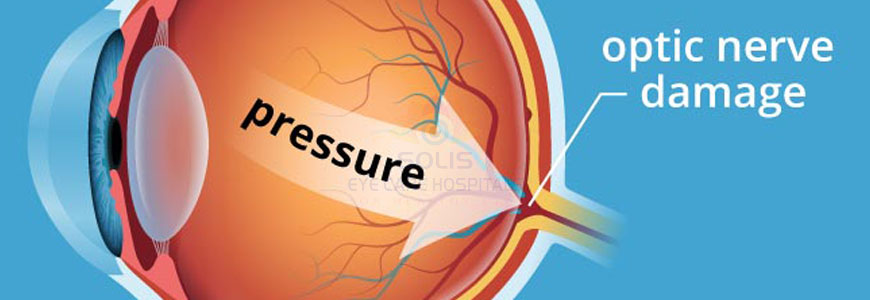Proud to achieve 3.56 lakhs satisfied clients \ For Online Consultation Call : 9515999415.
Our Latest Equipment is Best to keep your Vision perfect.
SVK Towers Kushaiguda Main Road, Near A.S Rao Nagar, ECIL Cross Road,
Secunderabad, Telangana-- 500062
R.K.Nagar Bus Stop, Opp. Bank of Maharastra, Malkajgiri, Hyderabad.
Call Us : +91 9515999407, +91 040 48541234
Opp Fab India, 6th Avenue x roads, Sainikpuri, Secunderabad.
Call Us : +91 040 49507523
Our Services
Glaucoma- An introduction
Glaucoma is a group of eye diseases that can slowly damage the eyes & can cause irreparable damage to the optic nerve resulting in vision loss and blindness. Glaucoma has been known since antiquity and sometimes called the “silent
thief of sight”. It is the leading cause of blindness all over the world & affects more than 60 million people worldwide.
Majority of glaucoma’s do not cause total blindness in the lifetime of an individual. The cause of
glaucoma is multifactorial and difficult to pinpoint a single cause in most cases, but effective screening & detection & decisive management can keep the disease under check and prevent from having a free run. This effort will
help preserve vision. Hence timely detection and appropriate treatment will limit the progression of glaucoma and its effects. So meet your ophthalmologist for an eye check up and screen yourself for glaucoma..

Fig 1 : Cross section of an ideal eye.

Fig 2 : Back pressure effect on optic nerve

Fig 3: Angle anatomy C.S
What causes glaucoma?
The space in the eye between the cornea and the iris is filled with a clear fluid. This fluid leaves the eye and enters the blood by passing through a gap at the angle where the cornea and iris meet called the trabecular meshwork. This tissue regulates the flow of fluid within the eye. When there is an obstruction or slowing to flow of fluid through the meshwork the fluid pressure in the eye raises resulting in the optic nerve damage Sometimes, eye infections, injuries, or certain medications can narrow the gap and compress this spongy tissue resulting in a rapid buildup of fluid and eye pressure.
Types of glaucoma
- Open-angle Glaucoma
- Angle closure Glaucoma
- Secondary Glaucoma
- Neovascular Glaucoma
- Normal tension Glaucoma
- Paediatric Glaucoma
Who is at risk for glaucoma?
- Old age
- Women
- Family history of glaucoma
- Race
- Near vision defect
Symptoms
The signs and symptoms of glaucoma vary depending on the type and stage of your condition.
- Patchy blind spots in peripheral or central vision
- Severe headache
- Eye pain, redness
- Nausea and vomiting
- Blurred vision
- Halos around lights




